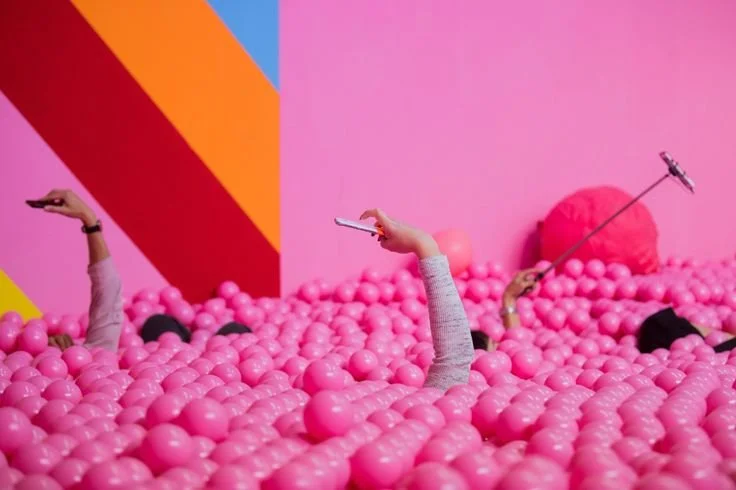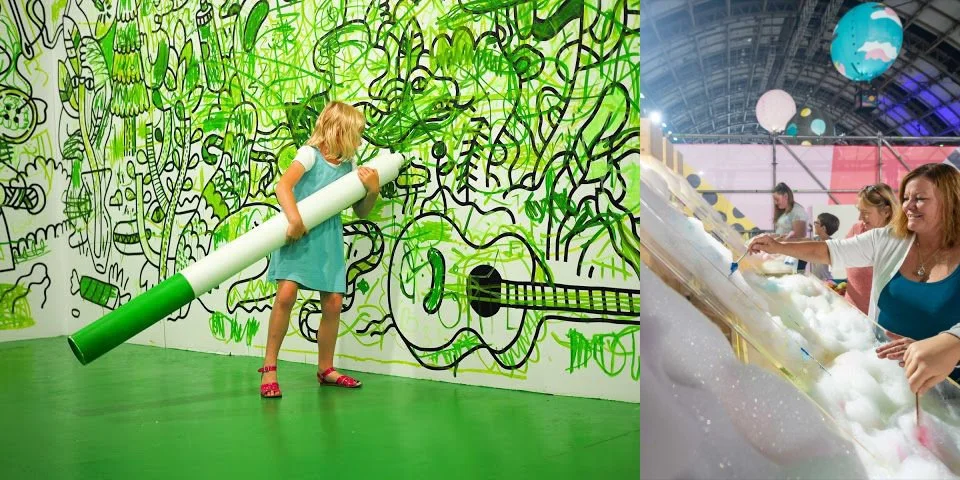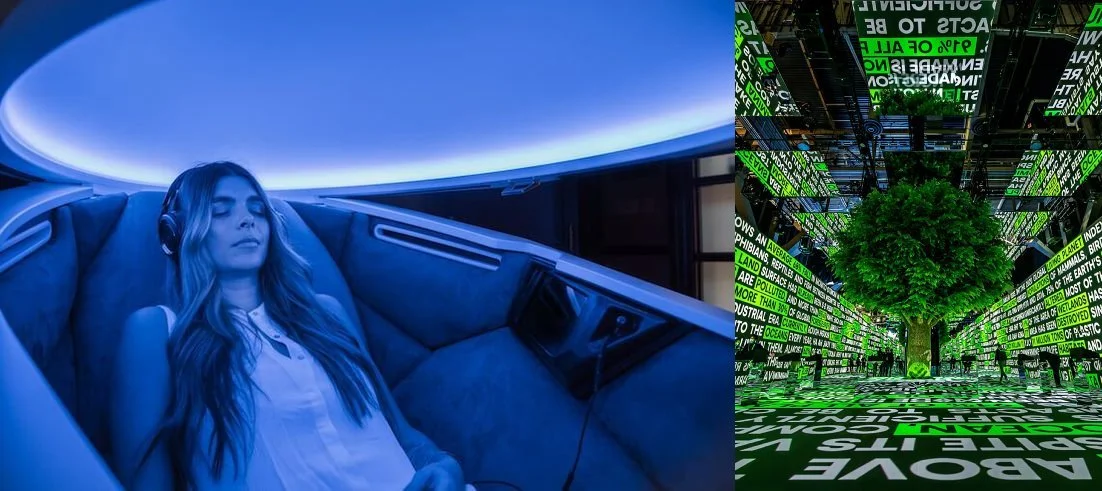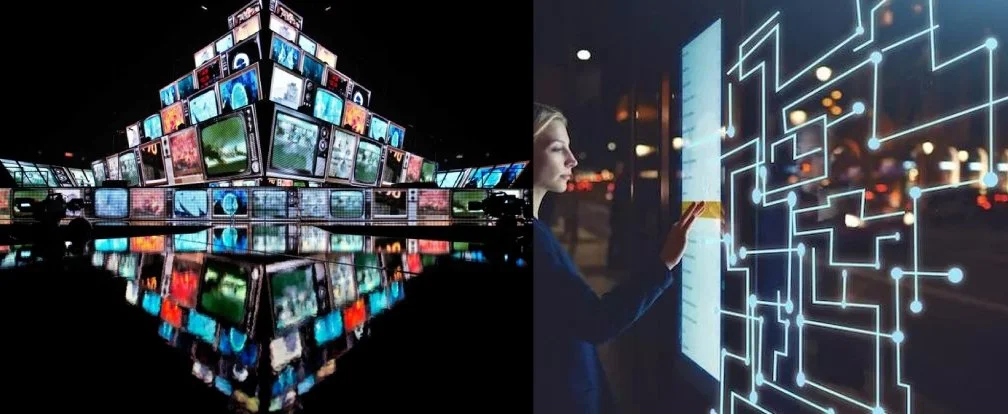How Trends for 2025 Will Influence Experiential Marketing
The experiential marketing landscape is evolving rapidly, influenced by technological advancements, shifting consumer behaviours, and global dynamics. Inspired by insights from trend reports generously shared by Amy Daroukakis, Iolanda Carvalho, Ci En L., Gonzalo Gregori, I’ve analysed emerging patterns and explored how they might reshape experiential marketing.
This article isn’t about definitive answers but an open inquiry: What will truly define experiential marketing in 2025? Here are a few trends that seem poised to play a pivotal role, but I’d love to hear your perspectives.
#1 Social and Cultural Dynamics
Social trends in 2025 highlight the importance of authenticity, humour, and participatory experiences in building trust and relevance with audiences.
Authenticity and Trust Building
Trend: Consumers continue to seek transparency and genuine connections from brands, moving away from overly polished campaigns.
Application: Brands can design unpolished, unscripted experiences, involve local communities in co-creation, and focus on storytelling that highlights both their successes and challenges, fostering relatability and trust.
Impact: Builds emotional connections and loyalty by resonating with consumer desires for transparency, imperfection, and meaningful engagement.
Community Engagement and Participatory Experiences
Trend: Consumers want to co-create and participate actively in brand experiences and value community-driven interactions.
Application: Brands can organise co-creation workshops, localised events, or campaigns that involve consumers in the design process. Interactive installations, AR-driven treasure hunts, and metaverse concerts let audiences actively engage, shifting from passive consumption to co-creation.
Impact: Community-focused initiatives build trust, foster inclusivity, and create meaningful consumer relationships, while participatory experiences increase memorability and stronger emotional connections with brands.
#2 Consumer and Lifestyle Trends
Changing consumer expectations, driven by Gen Z, are driving demand for authenticity, community, exclusivity, ethical practices, and health-conscious experiences. Brands that align with these priorities are poised for deeper engagement.
Sustainability
Trend: Consumers prioritise sustainability, favouring brands that align with eco-conscious values.
Application: Sustainable materials and eco-friendly designs in pop-up stores or event activations play a crucial role. Brands can host initiatives that highlight their environmental commitments, such as recycling workshops or green certifications.
Impact: Aligning with sustainability values can enhance brand loyalty and foster deeper emotional connections with eco-conscious audiences.
Health and Well-being
Trend: Consumers are increasingly seeking brands that promote physical and mental well-being.
Application: Brands can create wellness-focused activations, such as meditation pods in urban centres, fitness challenges using wearables, or content designed to reduce stress.
Impact: Prioritising consumer health strengthens emotional ties and reinforces the brand’s positive perception.
Luxury Experiences
Trend: Affluent consumers continue to demand exclusivity and tailored brand interactions.
Application: Luxury brands may provide invite-only experiences, such as private product launches, exclusive VR worlds, or bespoke travel adventures.
Impact: Personalised luxury experiences amplify perceived value, turning high-end customers into loyal brand advocates.
#3 Technology and Innovation
Technology continues to be a driving force behind the evolution of experiential marketing, offering brands innovative ways to engage and captivate audiences. Immersive technologies and AI integration are at the forefront of these advancements.
Generative AI, Robotics, and AR/VR
Trend: Generative AI and immersive technologies like AR and VR will continue to transform how brands interact with audiences, creating personalised and dynamic experiences.
Application: Experiential campaigns can leverage generative AI to create hyper-personalised, real-time marketing experiences. Examples include AI-generated virtual influencers or characters who can interact with attendees at live events or AR/VR can enhance immersive storytelling, allowing consumers to "live" a brand's story in virtual worlds or overlay digital content onto physical environments.
Impact: This will redefine engagement, enabling brands to offer more personalised and scalable experiences at a fraction of the cost.
Synthetic and Digital Humans
Trend: Synthetic humans are emerging as scalable and consistent representatives of brands, reducing reliance on human ambassadors.
Application: Synthetic brand ambassadors or digital humans can serve as guides at trade shows, in-store displays, or online experiences, ensuring consistent engagement with audiences worldwide.
Impact: They provide seamless 24/7 interaction, reducing operational costs and expanding brand reach.
Wearable Technology and Personalisation
Trend: Wearable devices and data analytics will continue to empower brands to deliver hyper-personalised experiences in real time.
Application: Smart glasses and wearables can enhance experiential activations by offering personalised content, live translations, or gamified rewards based on participant activity. Data analytics ensures these interactions are uniquely tailored.
Impact: Greater audience engagement and the ability to collect valuable real-time data about user preferences.
#4 Marketing Strategy Enhancements
Strategic innovations are empowering brands to optimise their campaigns and extend their reach, making experiential marketing more inclusive and effective.
AI-Driven Insights and Analytics
Trend: Real-time data and analytics tools enable brands to adapt and optimise their strategies in real time.
Application: AI tools can analyse real-time behavioural data during experiential activations, offering brands insights into consumer engagement and preferences.
Impact: Continuous optimisation of campaigns, improving ROI and tailoring future experiences.
Hybrid Events
Trend: Blending physical and virtual experiences enables brands to expand their reach and inclusivity.
Application: Combining physical and virtual elements, brands may run multi-layered campaigns (e.g., in-person events complemented by AR apps for remote audiences).
Impact: Extends the reach of experiential marketing, making it more inclusive and accessible.
Conclusion
These trends collectively emphasise personalisation, immersion, authenticity and sustainability as key considerations in experiential marketing. Technology will continue to bridge the gap between digital and physical realms, allowing for scalable, memorable campaigns




